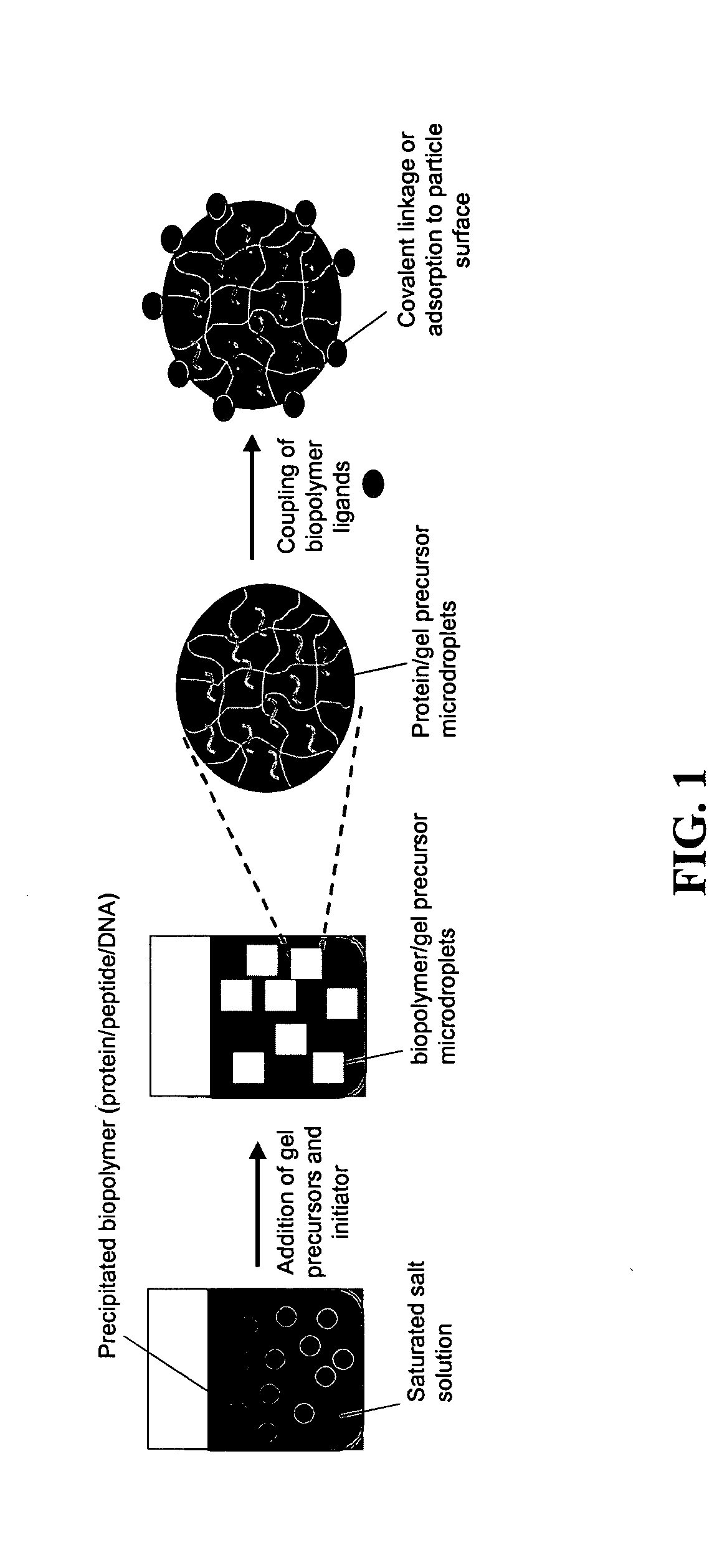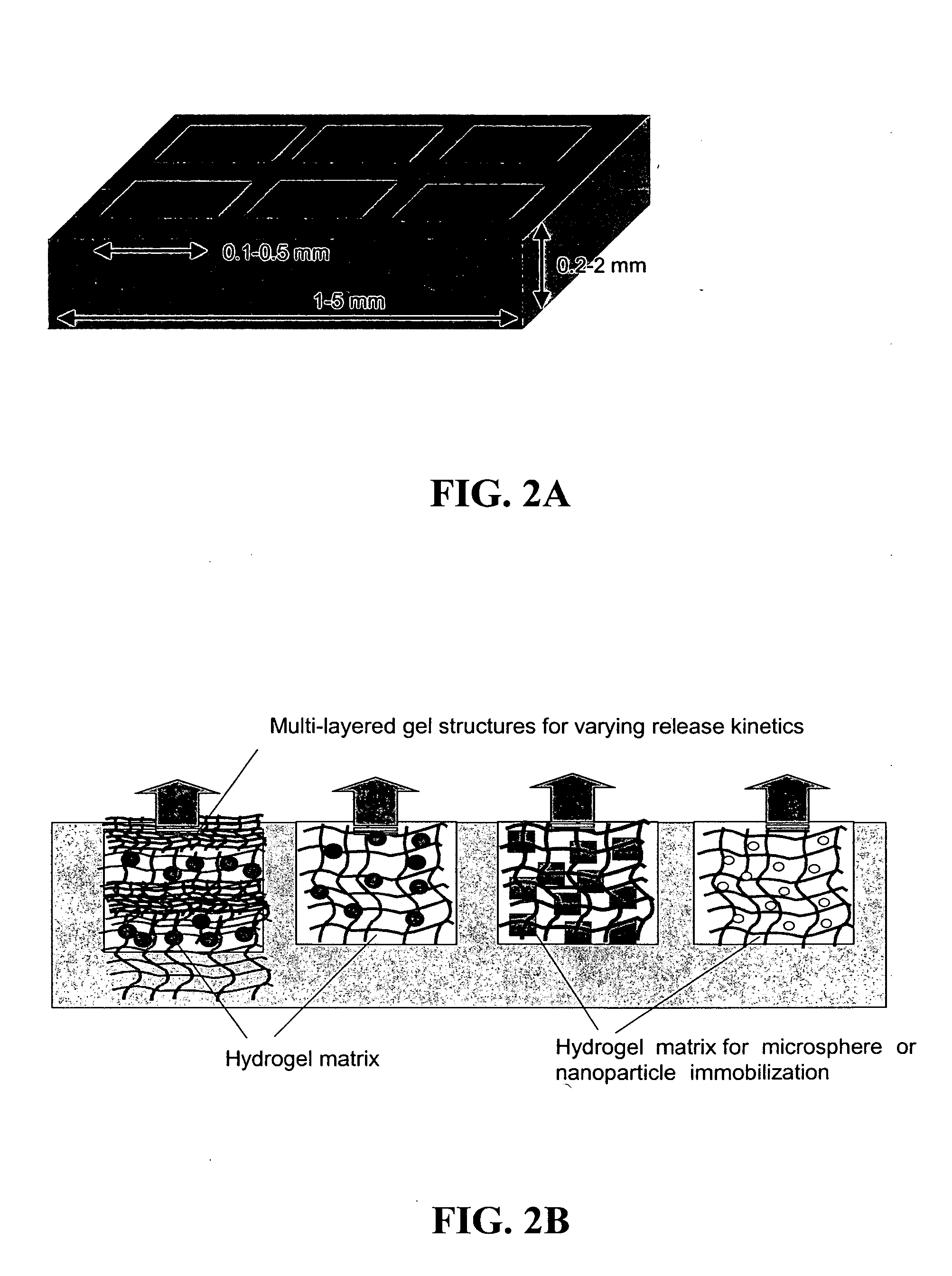Programmed immune responses using a vaccination node
a node and immune response technology, applied in the field of vaccine development, can solve the problems of protein-based vaccines with limited clinical success, protein-based vaccines with delivery problems, and problems with plga-based delivery vehicles, and achieve the effect of suppressing immune responses
- Summary
- Abstract
- Description
- Claims
- Application Information
AI Technical Summary
Benefits of technology
Problems solved by technology
Method used
Image
Examples
example 1
In Vitro and In Vivo Characterization of Chemokine (MIP-3α) Controlled Release Microspheres
[0089] MIP-3α controlled release microspheres were synthesized to provide a steady gradient of this chemoattractant in vivo toward an immunization site. MIP-3α (R&D Systems) was encapsulated in poly(lactide-co-glycolide) microspheres by a double emulsion process as previously described [Lavelle et al., Nat Biotechnol., 20:64-9 (2002)]. To control release kinetics, microspheres were fabricated using PLGA having molecular weights 4.4 KDa or 75 KDa (Alkermes), which degrade at 37° C. in saline over a time course of 1-2 weeks and 3-4 weeks in vitro, respectively. (Release of encapsulated factors significantly precedes complete degradation of the polymer). Following prior reports [Kumamoto et al., Nat Biotechnol., 20:64-9 (2002); Kim et al., Biomaterials, 18:1175-84 (1997)], BSA was used as a carrier protein to protect the chemokines during encapsulation. Release profiles were measured in vitro by...
example 2
Preparation of Antigen Delivery / DC Maturation Hydrogel Particles
[0094] Ovalbumin (60 mg) was dissolved in 100 ml 5M sodium chloride solution in water. Even though OVA was used as the model antigen for the proof-of-concept demonstrations provided herein, any antigen or peptide could be encapsulated in the nanogels. This protein solution was stirred at 600 rpm for 30 min to allow ovalbumin to salt out and form an emulsion at 37° C. The co-monomers—poly(ethylene glycol) methacrylate (526 Da, 2 ml), 2-aminomethacrylate (50 mg), poly(ethylene glycol) dimethacrylate (875 Da, 200 μl), and 100 mg of PEG-peptide-PEG were slowly added to the protein solution and allowed to also salt out into the protein-rich phase. Initiators ammonium persulfate and sodium metabisulfite (200 μl of 10% w / vol APS and 10% w / vol SMS) were added to the same aqueous medium followed by reaction at 40° C. for 5-30 min. The particles were separated by centrifuging the suspension at 10,000 rpm for 15 min and washing w...
example 3
In Vitro Antigen Delivery to Dendritic Cells Using Hydrogel Particles
[0096] Bone marrow-derived dendritic cells were generated in the presence of GM-CSF and IL-4 as previously described [Inaba et al., J Exp Med., 176:1693-702 (1992)]. To assess antigen-loaded gel particle uptake, time-lapse 3D fluorescence microscopy was performed on live DC cultures to which 5 μg / ml Texas red-ovalbumin-loaded particles had been added. FIG. 8A shows three frames of a representative DC showing the internalization of particles over the first 20 min of culture. DCs efficiently phagocytosed the antigen-loaded gel particles from the surrounding solution. To assay for cytotoxicity of internalized gel particles, a known amount of gels (1 μg particles) were incubated with 2×105 DCs in 250 μl medium for 20 hrs followed by a change of media. As shown in FIG. 8B, particle-treated DCs and controls that were subsequently stained with propidium iodide and analyzed by flow cytometry to detect changes in the relat...
PUM
| Property | Measurement | Unit |
|---|---|---|
| weight fractions | aaaaa | aaaaa |
| time- | aaaaa | aaaaa |
| pH | aaaaa | aaaaa |
Abstract
Description
Claims
Application Information
 Login to View More
Login to View More - R&D
- Intellectual Property
- Life Sciences
- Materials
- Tech Scout
- Unparalleled Data Quality
- Higher Quality Content
- 60% Fewer Hallucinations
Browse by: Latest US Patents, China's latest patents, Technical Efficacy Thesaurus, Application Domain, Technology Topic, Popular Technical Reports.
© 2025 PatSnap. All rights reserved.Legal|Privacy policy|Modern Slavery Act Transparency Statement|Sitemap|About US| Contact US: help@patsnap.com



